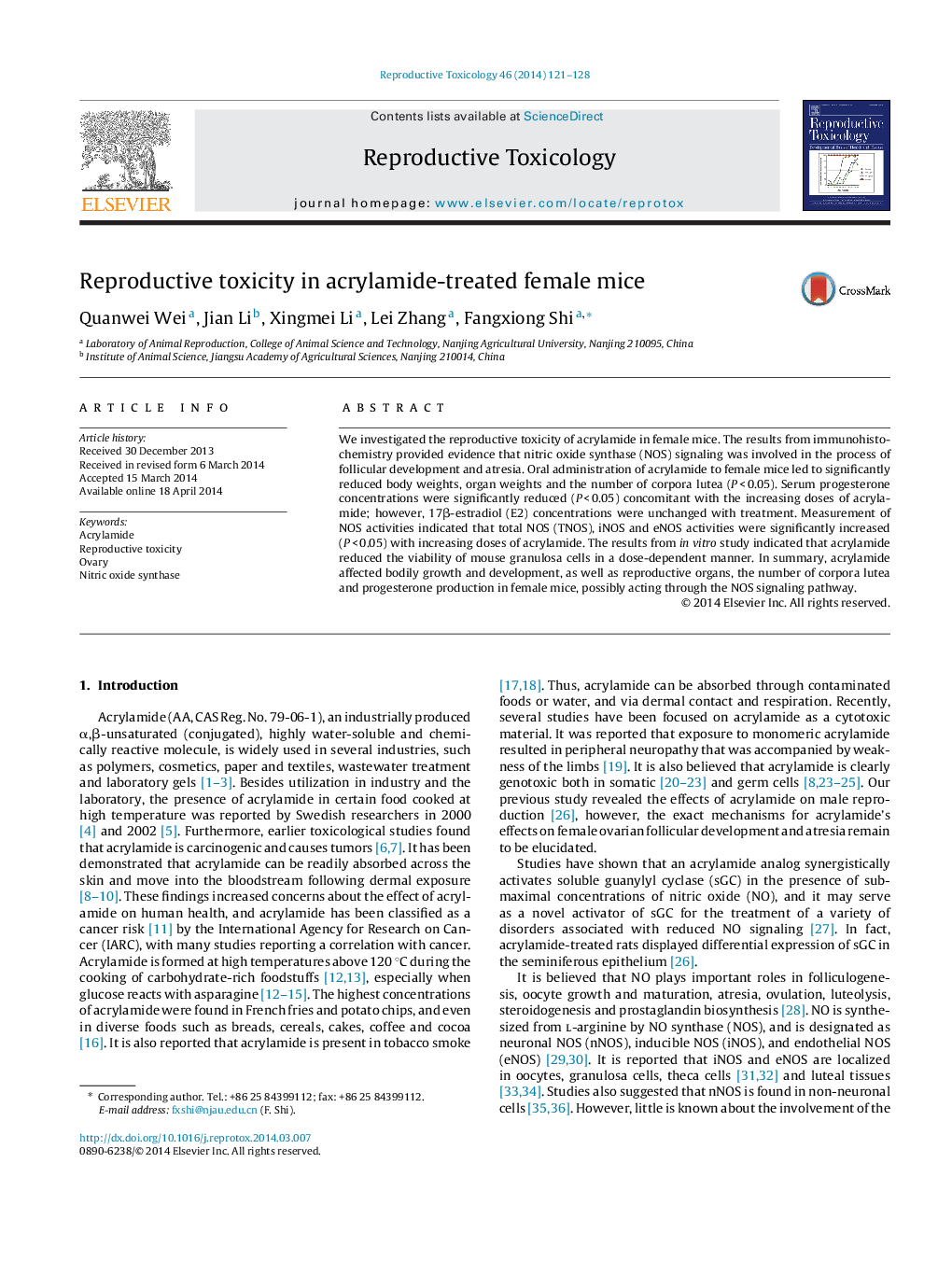| Article ID | Journal | Published Year | Pages | File Type |
|---|---|---|---|---|
| 5858905 | Reproductive Toxicology | 2014 | 8 Pages |
Abstract
We investigated the reproductive toxicity of acrylamide in female mice. The results from immunohistochemistry provided evidence that nitric oxide synthase (NOS) signaling was involved in the process of follicular development and atresia. Oral administration of acrylamide to female mice led to significantly reduced body weights, organ weights and the number of corpora lutea (P < 0.05). Serum progesterone concentrations were significantly reduced (P < 0.05) concomitant with the increasing doses of acrylamide; however, 17β-estradiol (E2) concentrations were unchanged with treatment. Measurement of NOS activities indicated that total NOS (TNOS), iNOS and eNOS activities were significantly increased (P < 0.05) with increasing doses of acrylamide. The results from in vitro study indicated that acrylamide reduced the viability of mouse granulosa cells in a dose-dependent manner. In summary, acrylamide affected bodily growth and development, as well as reproductive organs, the number of corpora lutea and progesterone production in female mice, possibly acting through the NOS signaling pathway.
Related Topics
Life Sciences
Environmental Science
Health, Toxicology and Mutagenesis
Authors
Quanwei Wei, Jian Li, Xingmei Li, Lei Zhang, Fangxiong Shi,
